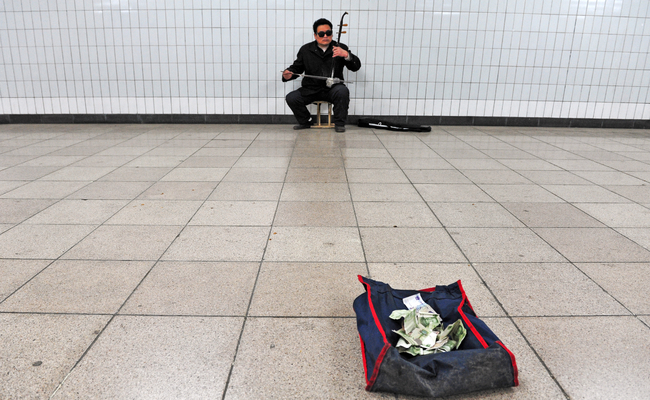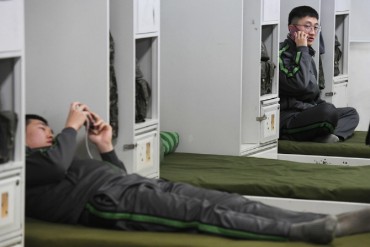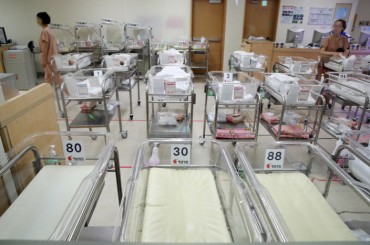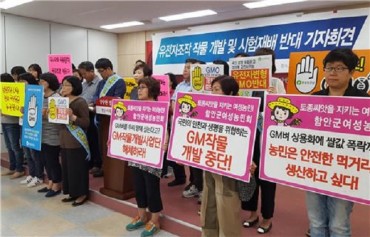
Despite a commonly spoken refrain that roughly translates to “the most pointless worrying in the world is worrying over celebrities”, a National Tax Service (NTS) document revealing the stark gap in earnings of the top 10 percent of entertainers compared to the rest of the field is challenging the deeply held notion that celebrities live the good life. (Image: Yonhap)
Seoul, Oct. 27 (Korea Bizwire) – Despite a commonly spoken refrain that roughly translates to “the most pointless worrying in the world is worrying over celebrities”, a National Tax Service (NTS) document revealing the stark gap in earnings of the top 10 percent of entertainers compared to the rest of the field is challenging the deeply held notion that all celebrities live the good life.
The NTS report’s contents were summarized and publicly disclosed by the National Assembly’s Strategy and Finance Committee on October 17. According to committee member Assemblyman Park Kwang-on, the top 1 percent of musicians and the statistical equivalent of actors had declared yearly incomes of 4.2 billion won and 2.0 billion won respectively last year. The top 10 percent for both professions also fared well; musicians brought in 732 million won and actors 367 million won.
The other 90 percent were found to be looking up from far, far below. The bottom 90 percent of musicians earned an average yearly income of 8.7 million won, while actors earned a paltry 6.2 million won. To put this into perspective, the top 10, or the top 1 percent made at least 50 times more than the rest of their industry counterparts.
2015 was no different in regards to income inequality in both fields; though the yearly earnings of actors and musicians were slightly lower (musicians: top 10 percent, 640 million won, actors: top 10 percent, 367 million won), the bottom 90 percent also earned less or not enough to make a meaningful difference, at 8 million won (musicians) and 7 million won (actors). The continued income disparity over the past two years suggests that the issue of staggering earnings differences is one inherent to the unique nature of the entertainment industry.

This might explain a certain portion of society’s reaction to comedian and TV personality Kim Saeng-min, who over a 25-year career accrued the means to live in a top class Gangnam apartment and own a Mercedes-Benz through an extremely frugal, some say “miserly” lifestyle. (Image: KBS/Yonhap)
Indeed, much like the ever present cliché of the “starving artist”, a certain proportion of entertainers have always struggled to make ends meet. Countless actors recall a period 10 to 20 years ago before massively successful TV shows and blockbuster movies became commonplace, when survival on a yearly budget of 3 to 5 million won was a way of life.
Despite the harsh day-to-day realities for most in the industry, the stereotypical celebrity life imagined by many on the outside is one of driving luxury cars into luxury buildings wearing luxury clothes. This might explain a certain portion of society’s reaction to comedian and TV personality Kim Saeng-min, who over a 25-year career accrued the means to live in a top class downtown apartment and own a Mercedes-Benz through an extremely frugal, some say “miserly” lifestyle.
One perspective is that no matter how diligent he was in managing his finances, his status as an entertainer, or as many Koreans like to say, “Isn’t he a celebrity,” as the fundamental reason for his financial status. Attitudes such as these mistakenly designate the fortunes of entertainers like Kim, who in terms of popularity and body of work is far from a celebrity and more akin to a veteran entertainer, as an inevitable certainty, something that data like the NTS report clearly refutes.
The invisible divide separating rich and poor, minority and majority, cuts through the management aspect of the entertainment world as well. Contrary to another relevant stereotype, that management “suits” live large off the backs of their struggling artists, a sweeping majority endure a hand-to-mouth existence, scraping at the bottom of the barrel to complete mundane tasks like putting gas in the company car.

With no middle ground, the ingredient that pushes management to the upper echelon is in a word, stars, though the past five to 10 years have seen the emergence of a supercharged version: Hallyu stars. (Image: Yonhap)
With virtually no middle class, the ingredient that pushes management from the dregs to the top is in a word, stars, though the past five to 10 years have seen the emergence of a supercharged version: Hallyu stars.
With a natural scarcity of such rarities, star-less management companies and entertainment agencies are forced to contend with each other in the search for the next “IT” person or group, not infrequently risking executives’ entire life savings and ultimately going bankrupt.
Responding to a request for comment, the president of a boutique talent agency said, “No matter how many big name actors you have, if they can’t get sponsorship deals or foreign deals then you’re left with nothing once you pay for gas and pay out employee salaries.”
In a frustrated voice, he added, “The majority of agencies representing actors can’t survive without funding from outside sources.”
Whether blinded to the reality or enthralled by a one-in-a-million shot of finding and nurturing the next Girl’s Generation, the line of would-be moguls figures to stretch around the block. In a world where many are called, but few are chosen, their hope is that they end up as a statistic: the top 1 percent.

To put this into perspective, the top 10, or the top 1 percent made at minimum 50 times more than the rest of their industry counterparts. (Image: Korea Bizwire)
S.B.W. (sbw266@koreabizwire.com)






